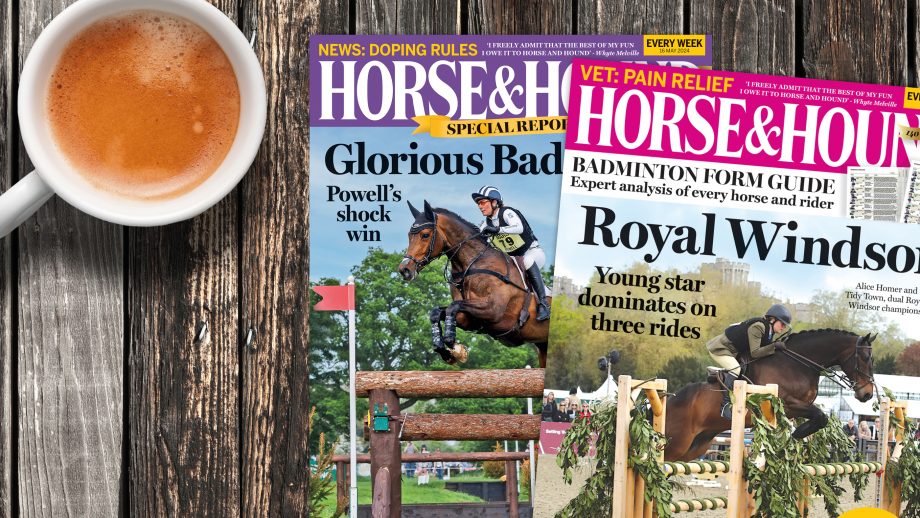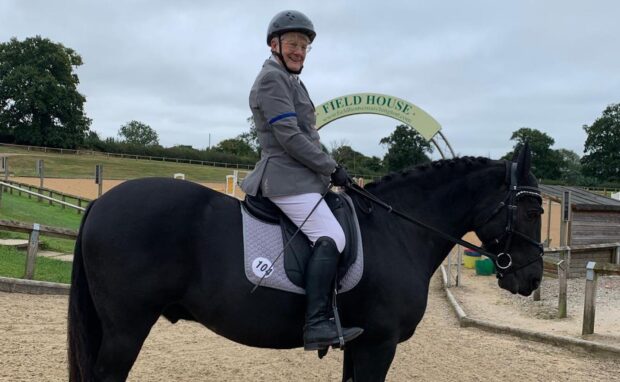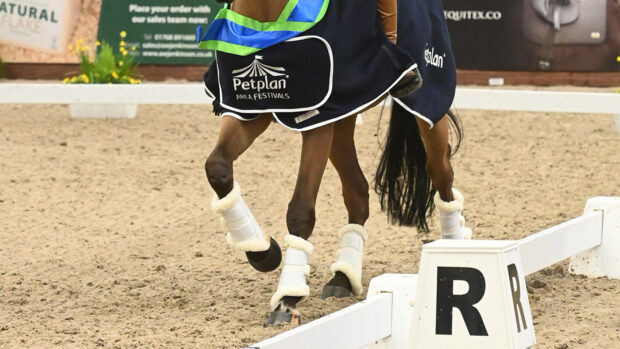We get it – competing in affiliated dressage for the first time can feel overwhelming. Whether you’re completely new to British Dressage (BD) competitions or you’ve been a BD member for a while but still have a few unanswered questions, we’re here to help break it all down.
From tack rules and test requirements to competition divisions, here are answers to seven of the most common questions riders ask.
1. Do I need to be riding at a certain level before I can compete affiliated?
No, affiliated dressage is open to horses and riders of all levels. BD offers a range of classes designed to provide opportunities for everyone, from grassroots competitors to international riders.
- Levels begin with intro, in which only walk and trot are required, and go up to grand prix, the highest level of dressage.
- Different tests are available to ride at each level, in either a short arena (20x40m) or a long arena (20x60m).
- Each test is numbered for differentiation – the lower-numbered tests at each level are designed to be easier, while the higher tests are more challenging.
2. Am I allowed to carry a whip in affiliated dressage?
Yes, but only in certain competitions.
✔ Whips ARE allowed at:
- Regular BD competitions, qualifiers, Premier Leagues, and High Profile shows
- Warm-up classes at championships
- Quest
- Young horse/pony qualifiers (4, 5, 6, 7yo)
✖ Whips are NOT allowed at:
- Area Festivals, regionals, Nationals, and Winter Championships
- Associated Championships
- Some young horse championships
Maximum whip length (measured from the top of the handle to the very end):
- 1.2m for horses
- 1m for ponies
3. Can I ride in a snaffle at BD shows?
Yes, snaffle bridles are permitted at all BD levels, from intro to grand prix. However, double bridles become optional from elementary level upwards.
Young horse classes have specific rules:
- 4-, 5-, and 6-year-old classes require a snaffle.
- 7-year-old classes allow a double bridle.
4. What do bronze, silver and gold mean, and how do I know which I am?
Each British Dressage level (e.g., Novice, Elementary) is split into three competition sections based on experience:
- Bronze – For riders and horses new to the level.
- Silver – For combinations gaining experience but not yet established.
- Gold – Open to all but designed for experienced riders and horses.
Which section do I compete in?
Your section is determined by points earned at that level by the rider, horse, and combination. The BD Handbook includes detailed checklists to determine eligibility.
At competitions, all riders in the same level ride the test together and are judged under the same criteria. However, for results and qualification purposes, the class is divided into bronze, silver and gold sections to determine placings.
5. Do I have to do sitting trot in a British Dressage test?
Mastering sitting trot is a challenge for all riders. The good news is, in affiliated dressage tests, riders can use rising trot up to Elementary level in all trot movements throughout the test.
- Up to elementary – Rising trot is allowed in all trot movements.
- At medium level – Sitting trot is required, except for medium and extended trot, where rising is allowed.
- At Advanced Medium and above – All trotwork must be in sitting trot.
6. Am I allowed to have a caller at British Dressage shows?
Yes, in most cases. A caller (or commander) is allowed in regular BD classes and qualifiers but not at most championships, including:
- National & Winter Championships
- Area Festivals & regionals
- Associated Championships
- Premier League competitions
Callers must also only read the exact words from the test sheet without emphasising commands.
7. What if I forget where I’m going part-way through my test?
First of all, don’t panic! It happens to the best of us.
If you go off course, the judge at C will ring their bell (or sound their horn). You will then:
- Be told where you went wrong.
- Be instructed where to restart from.
- Resume your test.
Penalties for errors of course:
- 1st mistake – Minus 2 points.
- 2nd mistake – Minus 4 points.
- 3rd mistake – Elimination.
In some cases, the judge may allow you to introduce a caller mid-test – but this is at their discretion.
Final Thoughts
Competing in affiliated dressage can seem daunting at first, but BD offers opportunities for riders of all levels. Whether you’re figuring out which section to compete in or simply getting to grips with tack rules, understanding the basics will help you feel more confident at your first show.
For full rules, test sheets, and membership details, check out the BD website.
You may also be interested in…

Fancy trying affiliated dressage, but not quite sure where to start? You need to read this…

Dress for success with Horse & Hound’s what to wear guide for dressage competitions

‘We left the arena and careered around the judge’s car’ and 21 more dressage bloopers

Subscribe to Horse & Hound magazine today – and enjoy unlimited website access all year round
Horse & Hound magazine, out every Thursday, is packed with the latest news and reports, as well as interviews, specials, nostalgia, vet, and training advice.




